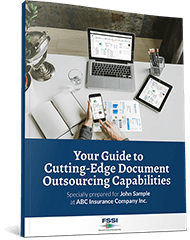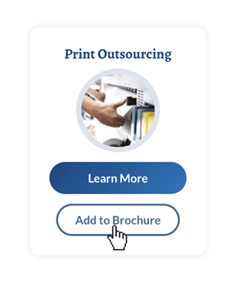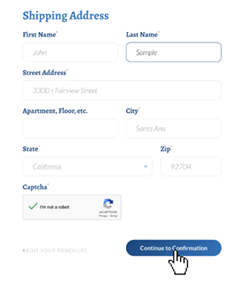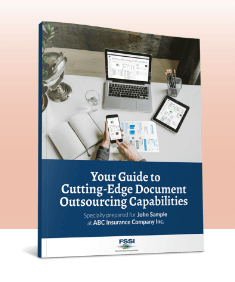Direct Mail, How-to Guides, Print and Mail Services, Printing, Variable Data Personalization
Offset vs. Digital Printing: Differences and Use Cases
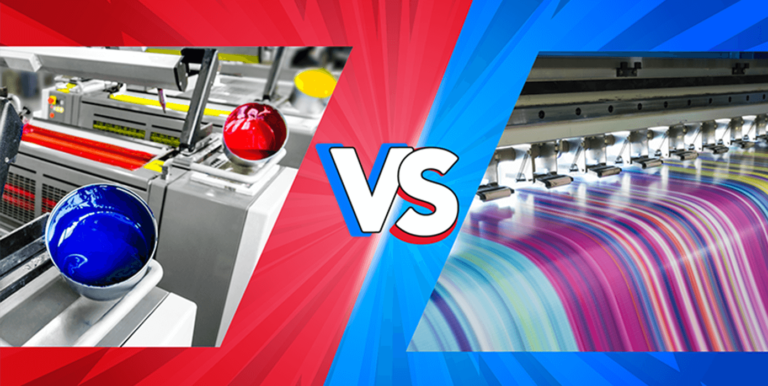
Advancements in print technology are changing the communications playing field when it comes to quality, affordability and cutting-edge capabilities. Offset printing and digital printing are the major processes by which print jobs are undertaken – both utilizing four-color printing methods. Each option has its advantages, offering different techniques to meet the needs of diverse production projects.
The increasing demand for personalized communications with quick turnaround times began a shift in the printing industry, as businesses around the world found themselves in need of services that produced high-volume output with color and variable data.
As the need for print services continues to grow, will offset or digital printing be the best method to handle your print jobs?
Offset vs. Digital Printing
When it comes to printing, offset and digital printing are two distinct methods with different strengths. Offset printing excels in producing high-quality prints, particularly for larger sizes and high quantities, at a lower cost per page. On the other hand, digital printing offers convenience and quick turnaround times, making it ideal for short-run production and situations requiring fast delivery. Understanding the unique advantages of each method enables businesses and designers to make informed decisions based on their specific printing needs.
What is Offset Printing?
Offset printing, also known as lithography, was traditionally the leading choice in quality print services. It is a process by which ink is transferred from an etched plate – one plate for each color – to a rubber sheet (i.e. blanket) before being transferred onto the printing surface. Typically, this has been the most consistent technique for precisely maintaining color matches, making it ideal for print runs that only require static printing such as pre-printed forms, brochures, flyers, business cards, and bulk postcard mailings.
However, due to the static nature of litho printing, it is not ideal for variable print pieces that will be mailed to individual recipients such as statements, letters, and personalized postcards. Before the advancements of full-color digital print, offset printing was used for variable print jobs to create static, pre-printed forms whereby the variable content was printed in black ink. This two-process print method significantly limited artwork flexibility, personalization, and the use of engaging color print, and required additional inventory management.
What is Digital Printing?
Digital printing is the process of printing digital-based images directly onto a variety of media substrates. Modern printing methods, such as laser and inkjet, are known as digital printing. These processes don’t use a plate or blanket but make use of liquid or pigment ink or toner. Inkjet technology includes a series of nozzles that spray tiny drops of ink directly onto the print surface while laser printing uses dry toner to print.
Digital printing has proven to be the best and most efficient process for variable data print jobs because you can print full-color artwork and data inline on plain white paper. This one-process print method significantly increases artwork flexibility, personalization, simplifies production processes and requires no additional inventory management. Digital print has successfully captured the high-volume market with the evolution of advanced technologies and capabilities.
Thanks to higher print quality and variable data printing capabilities, digital print is widely considered the most appropriate choice for customer communications. The latest advancements in print technology are helping to bring many of offset’s advantages into the digital printing world – truly changing the face of modern printing!
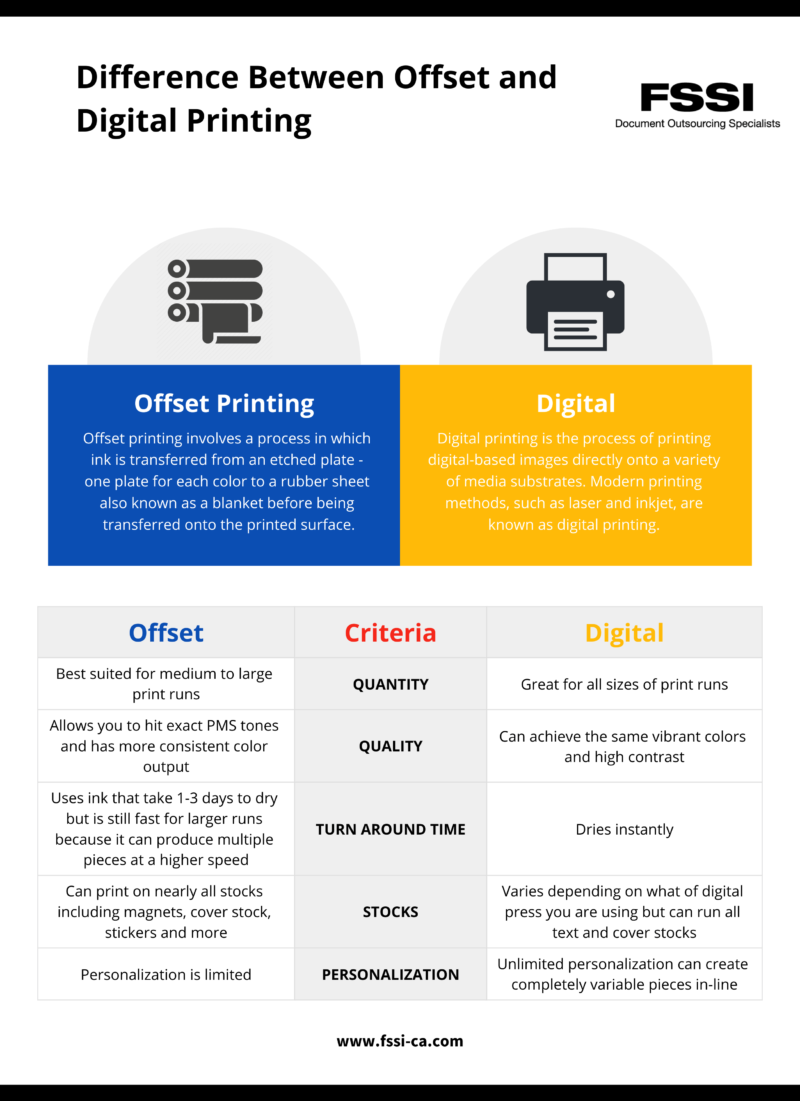
The Top 4 Advantages of Digital Printing
There is an undeniable and growing number of advantages to using the digital print process. As business needs diversify, the most efficient and convenient methods have become staples of communication. Today’s digital print equipment is among the most cutting-edge on the market.
Here are some of the biggest advantages of utilizing digital printing:
- Fast turnaround times dominate the digital print space, with full-color printing completed in one process and seamlessly printed directly from a print file. Without a lengthy set-up process, the calibration time of a specific job is shortened, contributing to quicker print time and overall delivery.
- Variable data printing is not an option with offset. As businesses have a growing need for personalized communications, variable data is a crucial element to effectively communicate with a customer base. With maximum customization options, each piece utilizing variable data printing is uniquely personalized, which increases effectiveness, engagement, and recipient understanding. Names, mailing addresses, personalized data, and targeted messages are easily applied to each individual mail piece printed inline in the print process.
- Improved print quality has removed the disparity in quality between offset and digital printing. The inkjet printing process has helped to revolutionize the industry as well as the quality and speed of the output. The latest inkjet technology can print on traditional offset stocks with dull, silk, and glossy finishes. High-quality digital print coupled with software-managed color management practices adds maximum value to print pieces and makes production processes more dependable than offset.
- Environmental efficiency is achieved through streamlined digital processes. Exact amounts of ink and toner are used to avoid waste. Eco-friendly and biodegradable inks and toners are also available for more sustainable printing. Digital print also removes the need to wash plates or blankets with harmful chemicals at the end of the printing process.
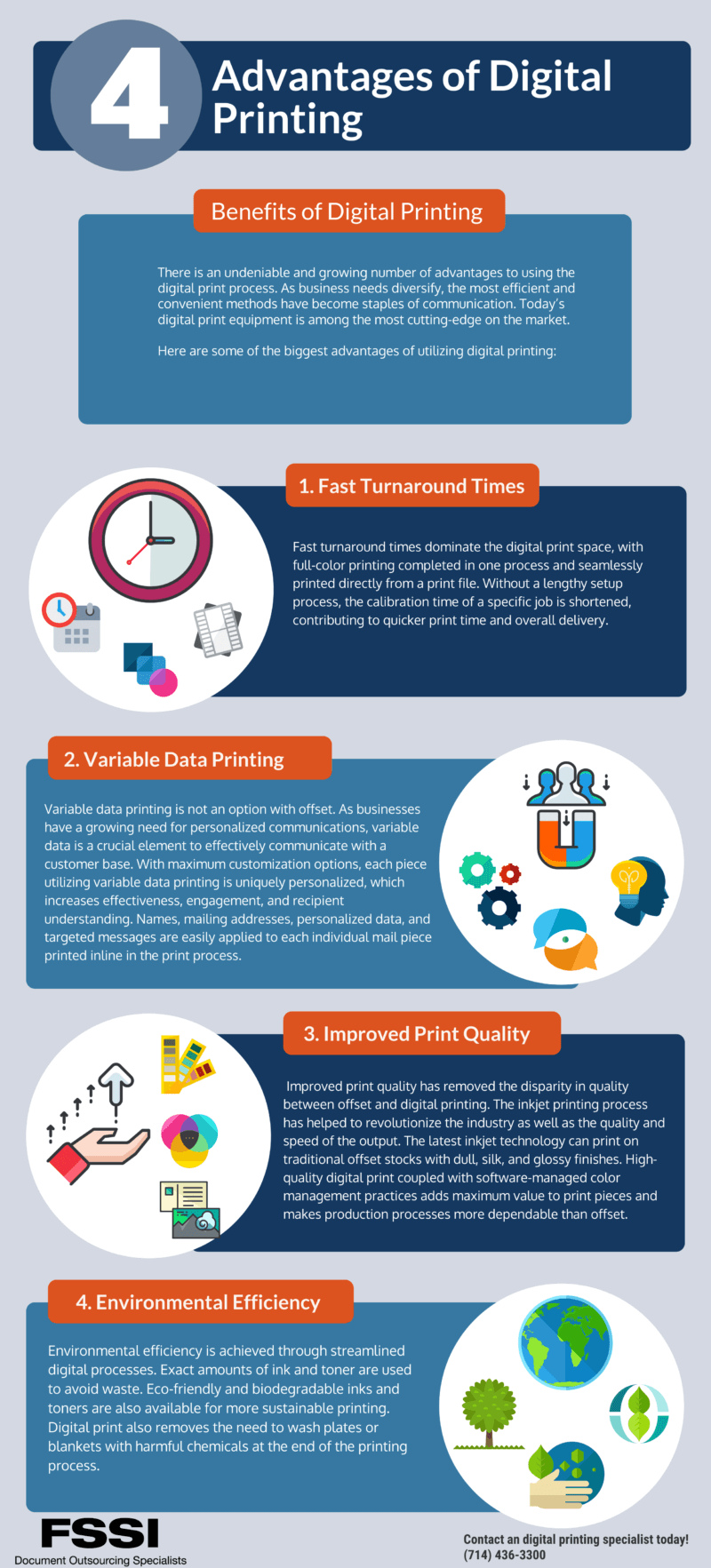
The Benefits of Commercial Digital Printing
As the quality of digital print services increases, the advantages become increasingly apparent and beneficial. Quick turnaround times are vital to any business looking to offer timely communications to its customers. Variable data helps businesses reach their exact customers and audience with uniquely-created and individualized content. As technology improves, the quality of digital printing has become second-to-none, with greater detail, color match capabilities and overall precision. Without the need to wash plates or use excess ink, digital printing is also less wasteful and generally more environmentally friendly.
Thanks to technological advancements, the lines between digital and offset quality are becoming increasingly blurred. Digital printers now offer the same level of detail, with reliable levels of efficiency and speed. For businesses with a wide range of printing needs, the cutting-edge digital system has proven to be the most versatile and efficient process available today.
Why Should You Choose Digital Printing Over Offset?
High-volume digital printing services from FSSI enable your company to increase the impact and business value of statements, invoices and other customer-facing documents. Reach the right people with the right message at just the right time – using industry-leading technology.
At FSSI, utilizing today’s best printing technologies is a top priority. Contact us at 714.436.3300 to discover all of the advantages that the digital printing process can offer your business.

